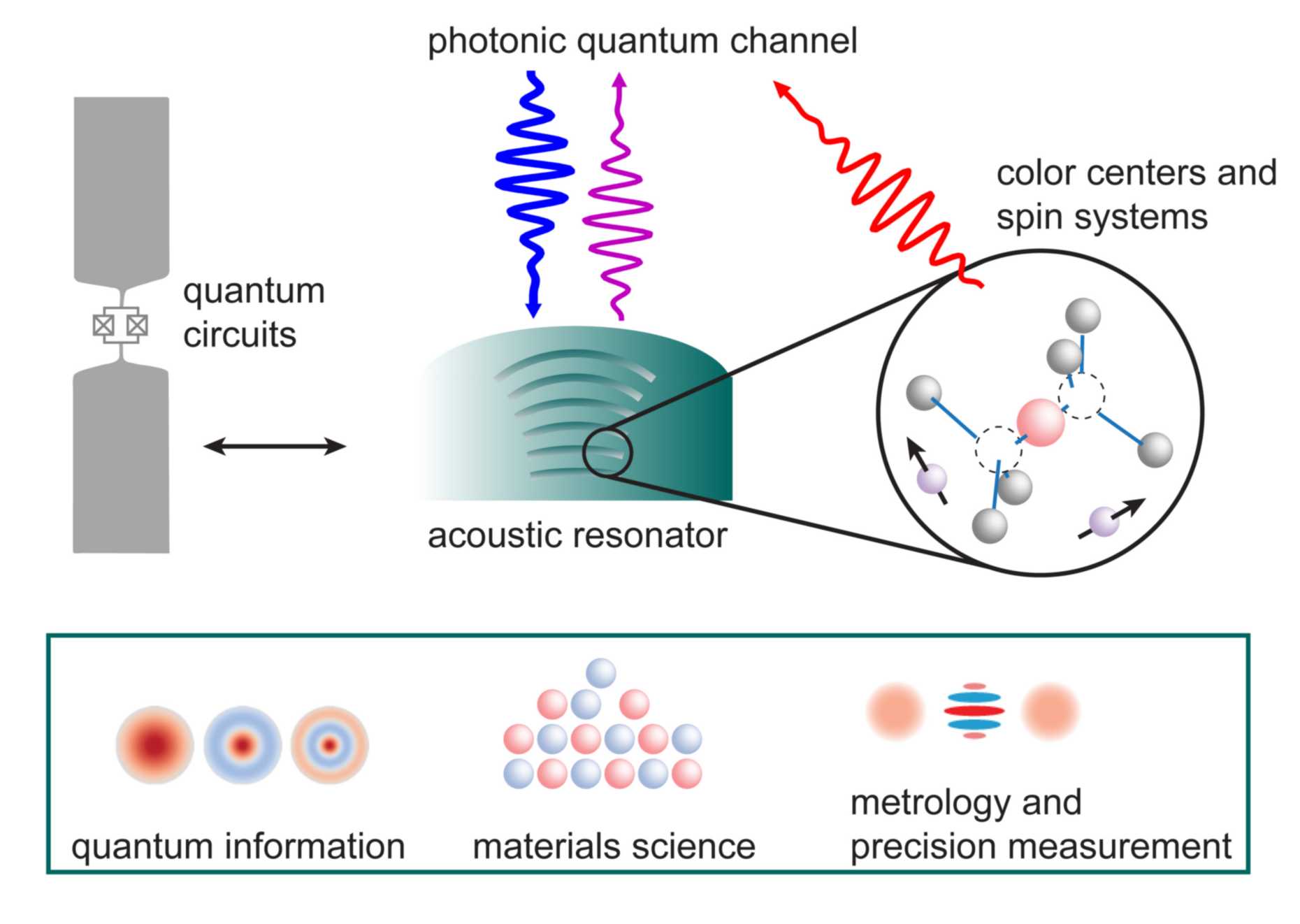Research
Summary
There are many types of quantum systems being explored as platforms for creating, storing, and transporting quantum information. In our group, we are working on connecting some of them together and developing hybrid quantum devices. We focus on a variety of solid state and optical quantum objects, including superconducting microwave circuits, mechanical resonators, color centers in diamond, and visible/infrared light. Each of these systems has its own special talent when it comes to processing quantum information, which you can read more about below. By combining them, we hope to build more sophisticated quantum machines that can do more than the individual components alone. Along the way, we'll learn about how to get this diverse group of objects to work well together while preserving their unique useful properties. Moreover, exploring physics at the interface of very different quantum degrees of freedom often leads to new phenomena and perspectives. We hope to gain a better understanding of the quantum world through our work.
Watch Yiwen give her Inaugural Lecture on creating quantum states of sound

Toolbox
- Superconducting microwave circuits: These circuits include microwave resonators and artificial atoms based on Josephson junctions. The field of circuit QED has made them into sophisticated devices for quantum computation. We are coupling them to mechanical resonators to develop new ways of storing and transmitting quantum information.
- Color centers: Nitrogen-vacancy and silicon-vacancy centers are defects in diamond that act like artificial atoms. They have spin degrees of freedom that are great for storing and manipulating quantum information, but also conveniently couple to light and acoustic waves.
- Visible and infrared light: They are the natural medium for transporting quantum information over long distances. They've been shown to interact with color centers and mechanical resonators, but don't usually play well with superconducting circuits. We're tackling the challenge of building a quantum interface between the microwave and visible/infrared regimes.
- Acoustic resonators: Mechanical motion couples to almost anything. For many solid state quantum systems, this can be a nuisance, but properly controlled, mechanical motion can be used as a versatile quantum transducer. We focus on bulk acoustic wave resonators, which can store gigahertz frequency sound waves for very long times and interact with all the other quantum objects we use.